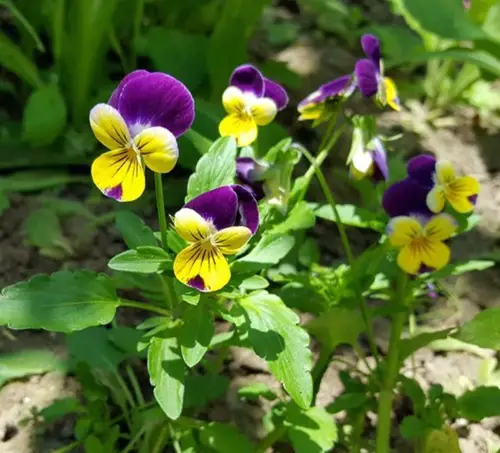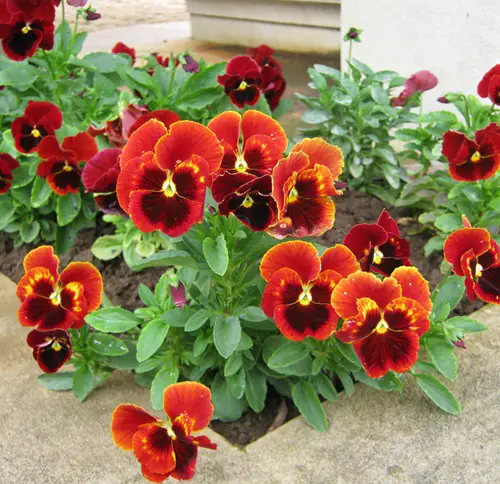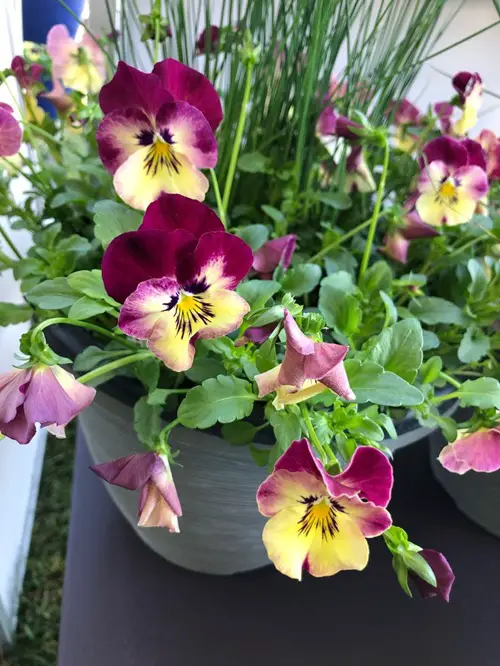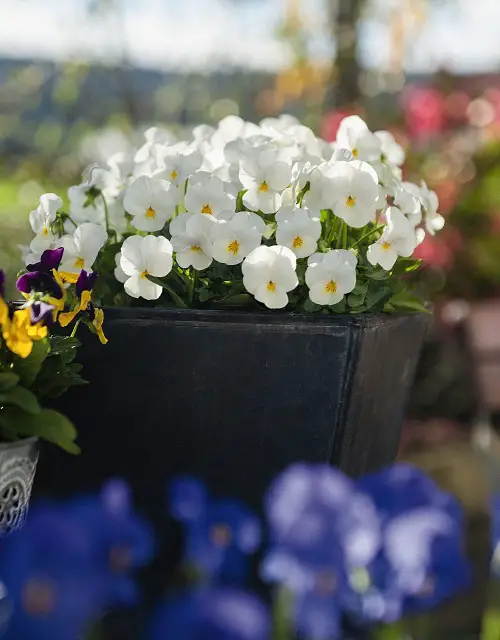Get your baskets and planters ready now! It’s almost autumn—time to plant these Beautiful Pansy Varieties for exquisite Winter blooms!
The time to act is now for the upcoming autumn! The stage is ripe to set your garden up for a colorful, sweet-scented, bloom-filled cold season. We give you a selection of pansy varieties that you should plant in the coming days of fall, as they are champions at handling frost, snow, and many things winter!
How Cold is Too Cold?
They’re also called “ice” pansies, but let’s check how far we can push their cold threshold.
Most of these pansy varieties will survive throughout in regions that experience mild winters, such as USDA zones 7-11. However, in colder areas—USDA zones 4 to 6—they will bloom through fall and likely go semi-dormant at the chilliest hours but can intermittently on milder days. So figure out your setting and get started already!
Now, you can plant them directly in garden beds, but provide some protection with mulch or frost fabric during severe cold spells. However, we love pansies in hanging baskets, window boxes, and quaint little planters. If you’ve done that, you can move them to a protected place when the temperature dips a lot.
So, what are the most beautiful winter pansy varieties? Let’s dig in.
Beautiful Winter Pansy Varieties
1. Pansy ‘Heart’s Ease’
Botanical Name: Viola tricolor ‘Heart’s Ease’
Arguably one of the most colorful pansies, the Heart’s Ease is a winter-hardy flower. Its delicate and multicolored blooms come in combined patterns of purple, cream, and yellow—all on a single bloom! It exudes a mild soothing fragrance and is often used as an edible garnish.
You can sow its seeds in spring or autumn, and it will produce blooms that will last through winter!
2. Pansy ‘Matrix Solar Flare’
Botanical Name: Viola x Wittrockiana ‘Matrix Solar Flare’
What a cool name—it perfectly sums up its fiery reddish-orange color palette that spices up your garden from fall through winter. Hardy to USDA zones 5a-10a, it can survive at temperatures as low as -20 F (-28 C) for short intervals.
This plant grows to about nine inches tall. What makes it more interesting is its blooms, turning yellow in warmer regions and red in colder areas.
3. Pansy ‘Sorbet Yellow’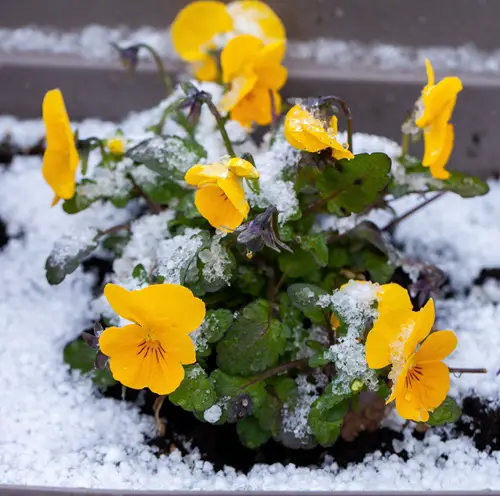
Botanical Name: Viola cornuta ‘Sorbet Yellow’
Mmm! Winter, sorbet, fragrance—all these words are getting us hungry! But what’s more lip-smacking is this delicious-looking Sorbet Yellow winter pansy. It makes a stunning, sunny ground cover with its compact size and bright yellow flowers–a bloom in gloom.
A relatively modern variety, it has been specifically modified to withstand the cold while looking its cheery best. Blooming through spring, autumn, winter, and summer, this all-rounder reaches a height of about eight inches and is delightful in hanging baskets.
4. Pansy ‘Tiger Eye Red’

Botanical Name: Viola cornuta ‘Tiger Eye Red’ F1
With a ferocious name like Tiger Eye Red, this pansy variety is sure to command all attention in the garden! But it’s not just the name; it has brilliant burgundy veins meandering through yellow and mahogany velvety petals, looking quite like an artistic masterpiece!
Bigger than most pansies and with a sweet aroma, this winter pansy is frost-tolerant and needs moist, cool soil. Officially, it blooms from spring to autumn, but here’s a secret—we’ve seen these extraordinary flowers suddenly pop up during Christmas in the dead of winter!
5. Pansy ‘Deltini Honey Bee’
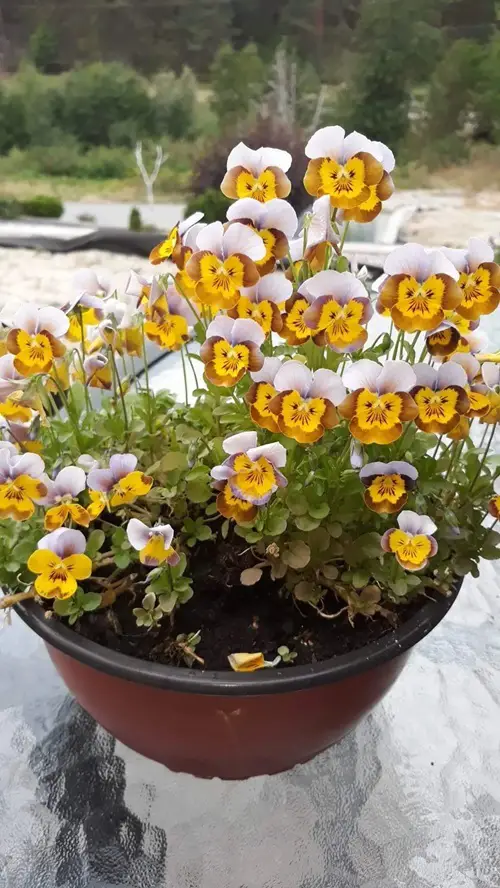
Botanical Name: Viola cornuta ‘Deltini honey bee’
A member of the fast-growing Deltini series, honeybees can easily camouflage and fade into this variety’s similar-hued yellow and bronze petals! Petite and compact, it blooms best in average temperatures of about 66 F (19 C) but can survive dips as low as 5 F (-15 C).
Like most other winter pansy varieties on this list, it produces flowers both in spring and winter. It loves fertile, humus-rich, moist, well-draining soil and enjoys full to partial sunlight.
6. Pansy ‘King Henry’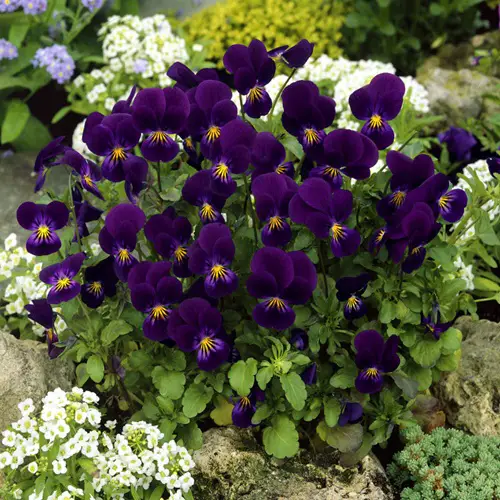
Botanical Name: Viola cornuta ‘King Henry’
King Henry Pansy is truly majestic with its royal purple blooms that stand tall and proud even in freezing winters. Its deep violet petals are marked with bright yellow centers, providing ample contrast to the gloom of winter.
Plant this cold-hardy pansy in fertile, moist, and well-draining soil in early to mid-autumn to produce blooms in late to early winter. These are hardy to zones 5-9.
7. Pansy ‘White Perfection’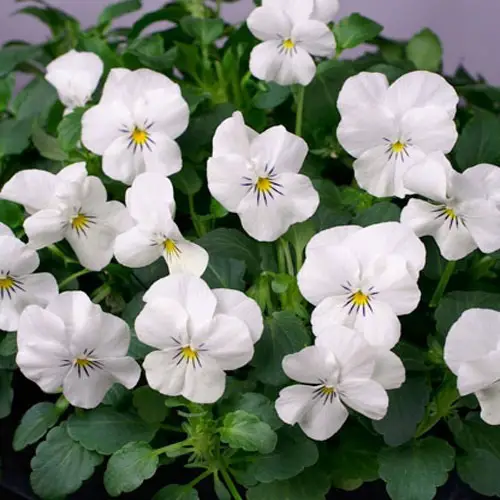
Botanical Name: Viola cornuta ‘White perfection’
Aptly named White Perfection, its serene white petals symbolize purity and innocence. These pansies grow well as border plants, in garden beds for ground cover, and hanging planters and window boxes! They also have a light and pleasing scent.
White Perfection is cold-hardy and thrives in USDA zones 4-10. If you love such snowy blooms, check out these white flowers with yellow centers.
8. Pansy ‘Matrix Yellow Blotch’
Botanical Name: Viola x Wittrockiana Matrix Yellow Blotch
Cute like a blotchy mustached tweety bird, this hardy pansy variety performs well in winters and summers! The Matrix Yellow Blotch is super easy to maintain, and its versatility makes it popular in landscaping and strip gardening, especially in late autumn and winter.
The best part is that it’ll keep blooming even when the temperature is -10 F (-23 C).
9. Pansy ‘Coolwave Raspberry’
Botanical Name: Viola x Wittrockiana ‘Coolwave Raspberry’
This raspberry and pastel yellow-hued pansy may sound like a tall, cool glass of a refreshing summer drink, but this one’s a winter survivor! It grows rapidly with a robust trailing habit, spreading around 30 inches. As soon as the temperature dips to freezing levels, it’s game time for this plant!
Hardy to USDA zones 5-10, it can also bloom in spring, summer, and fall if you can keep it cool enough.
10. Pansy ‘Admire Cream’
Botanical Name: Viola cornuta ‘Admire Cream’
With creamy petals, yellow centers, and delicate petals, here’s another snow-white beauty to add pearly sophistication to your windows and garden beds. Thriving in the extreme cold of USDA zones 6-9, it tolerates various types of soil but is biased towards slightly acidic, moist mediums and needs partial sun at least to flower.


